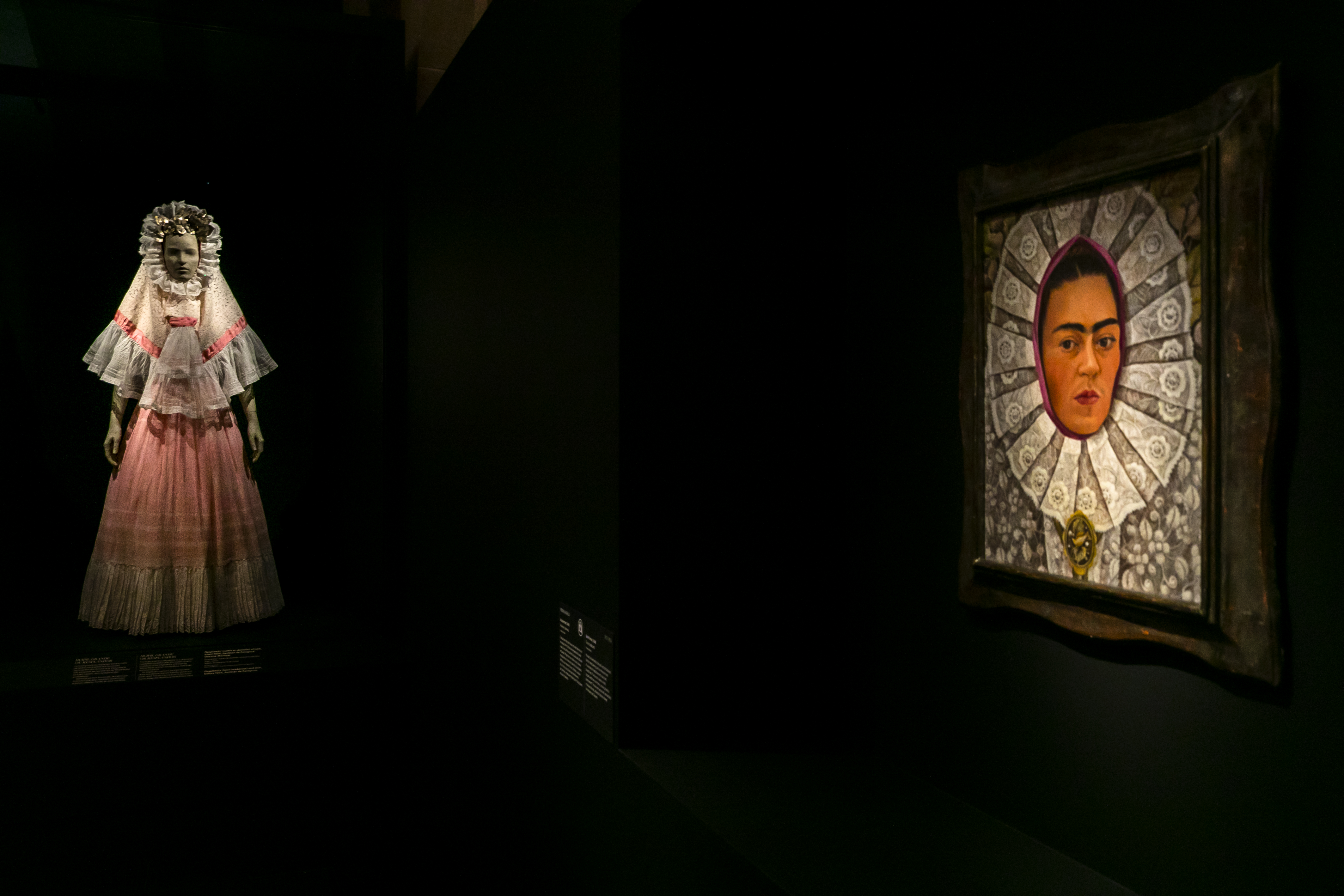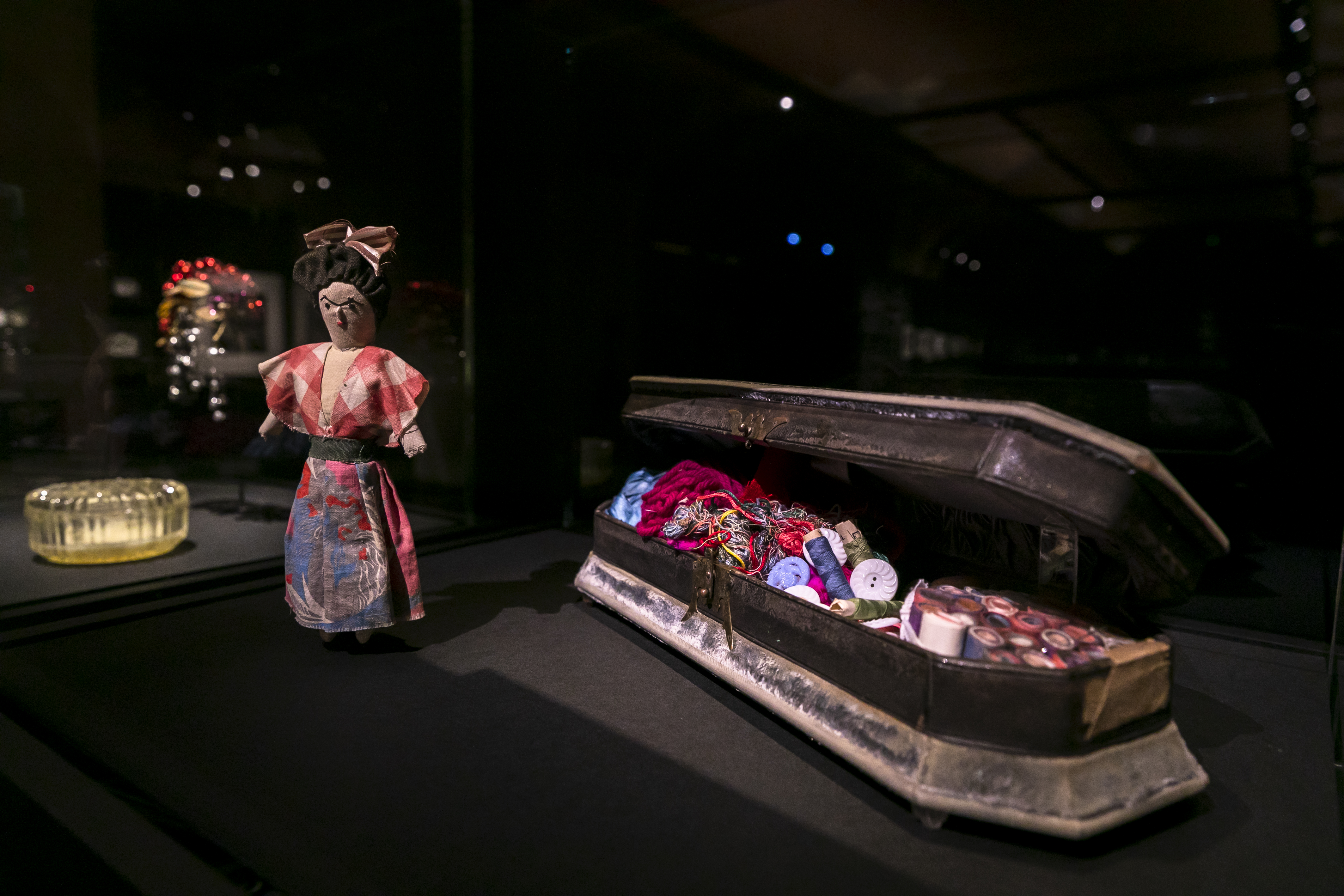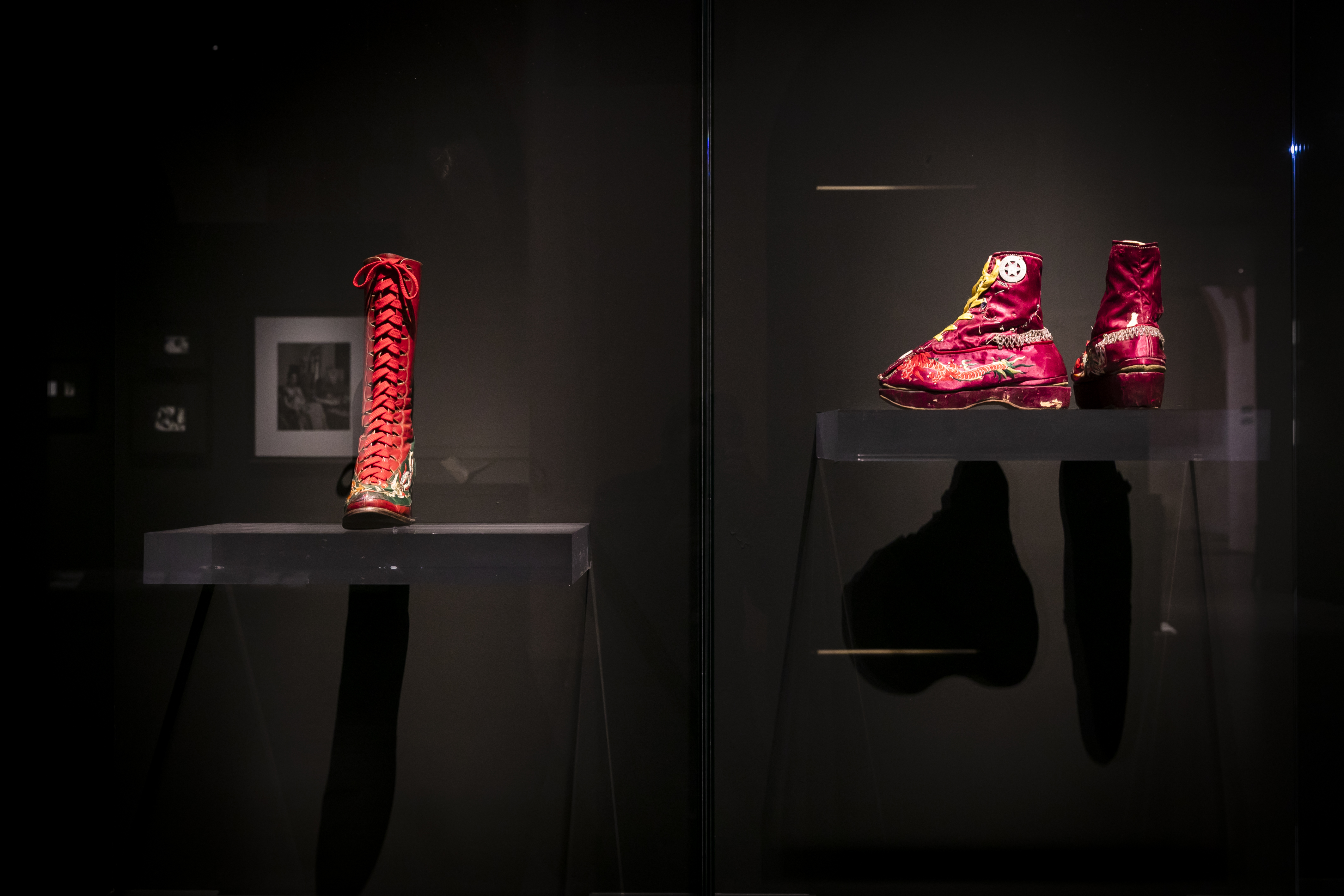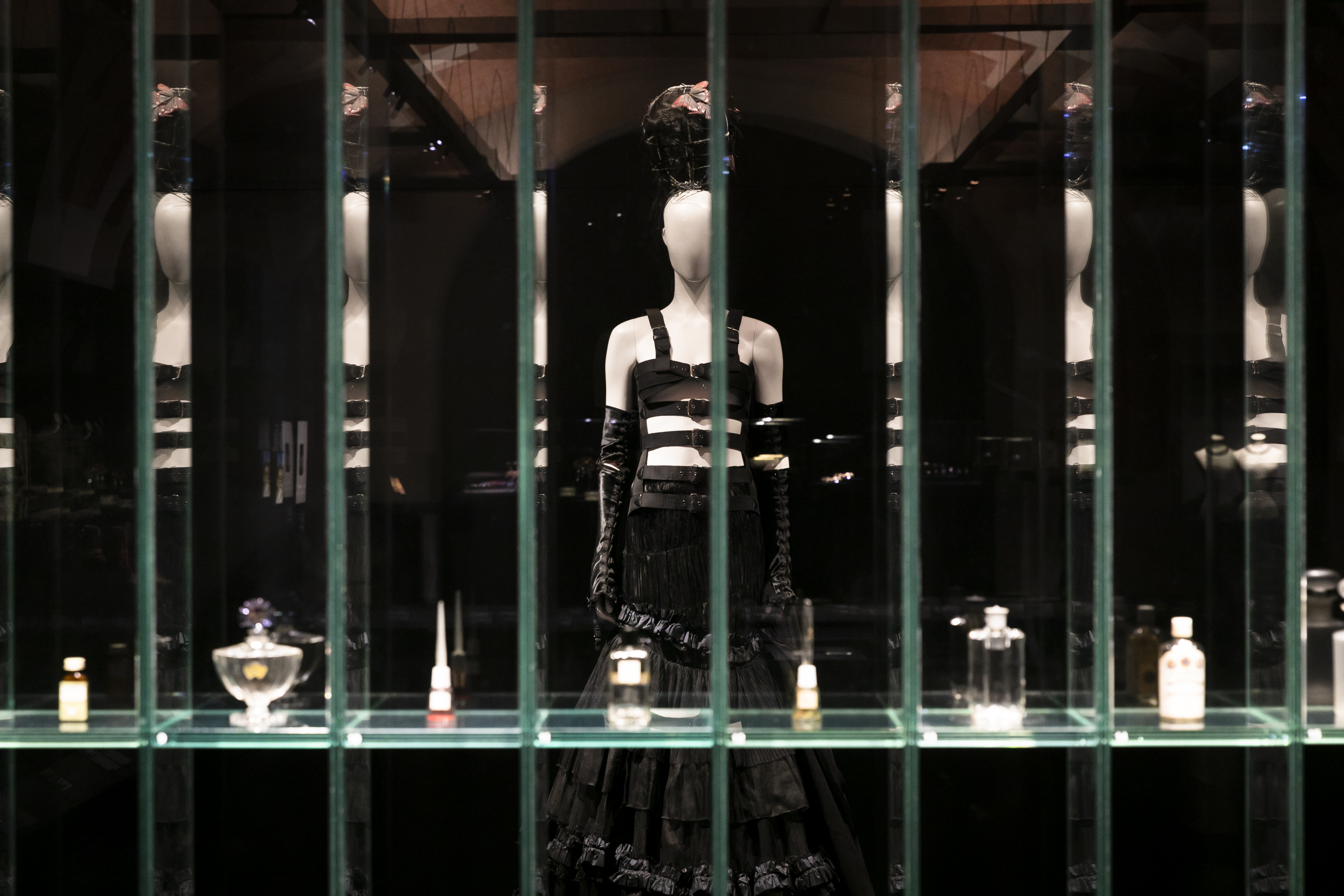In addition to being an icon for twentieth-century painting, the Mexican artist was a source of inspiration for haute couture with her unconventional clothes, traditional Mexican garments, a unique hybrid style that intertwined elements from different regions and eras, identifying with women and the matriarchal culture of Tehuantepec, adopting their embroidered blouses, long skirts, elaborate hairstyles and rebozos (woven shawls) in a fascinating yet personal interpretation of mexcanidad.
Until March 5 Palais Galliera celebrates Frida Kahlo inviting visitors to explore the private side of the artist’s life, to understand how he built his identity through his way of presenting and representing himself. For the first time in France, and in close collaboration with the Frida Kahlo Museum, the exhibition entitled Frida Kahlo, au-delà des apparences he urges to move away from commonplaces, letting oneself be guided by the over 200 objects from the Casa Azul, where Frida was born and raised, including clothing, accessories, letters, cosmetics, medicines and orthopedic aids.

Frida Kahlo, au-delà des apparences, Staging | Photo: © Laurent Julliand
His parents built the house in 1904 to decorate it in the European style, which was in vogue at the time. Frida Kahlo and her husband Diego Rivera renovated it in the 1930s, repainting the walls in a bright blue and adorning it with objects that reflected their attachment to Mexican tradition, to pre-Hispanic sculptures, to votive paintings. Thus Casa Azul became a cultural center attracting prominent personalities from Mexico and beyond.
When, in 1954, Frida died, her personal effects were literally sealed by Rivera, only to be discovered 50 years later, in 2004. The public will be able to browse this precious collection that includes traditional Tehuana dresses, pre-Columbian necklaces that Frida he collected and hand-painted corsets, but also prostheses, films and photographs of the artist, to compose a visual narration of his extraordinary life.

Frida Kahlo, au-delà des apparences, Staging | Photo: © Laurent Julliand
On the other hand, after the serious accident at the age of 18, Frida used her appearance as a means of expressing doubts and feelings. Traditional clothing was meant to be a declaration of her Mexican identity of hers, but also a way to cope with her state of hers. The exhibition follows the path through which Frida has cultivated her image of her, an image that becomes a manifesto, becoming an expression of her cultural heritage, but also an example of coexistence with disability.
In shaping the image of her disabled body, Frida Kahlo perhaps played a pioneering role, building a visual vocabulary with which she expressed her physical and emotional suffering, while describing her own ability to create meaning, joy, art, beauty.

Frida Kahlo, au-delà des apparences, Staging | Photo: © Laurent Julliand
The path, biographical and thematic at the same time, follows Frida during her short stay in Paris, examines her relationship with the surrealist group. The public is invited to follow the artist to “Gringolandia” – as Frida called the United States, where she accompanied her husband Diego Rivera when he was commissioned to paint murals in San Francisco, New York and Detroit – and then to Paris. The short stay in the French capital coincided with her illness. Taking care of her were Marcel Duchamp and his partner Mary Reynolds. Yet in Paris Kahlo enjoyed spending time with Dora Maar, Jacqueline Lamba and Alice Rahon, exploring the city, flea markets and its fashion trends.
The seventh and last section of the exhibition at the Palais Galliera will finally present a world-famous cultural icon Frida Kahlo, the muse of designers such as Jean Paul Gaultier, Yohji Yamamoto, Alexander McQueen.

Frida Kahlo, au-delà des apparences, Staging | Photo: © Laurent Julliand

